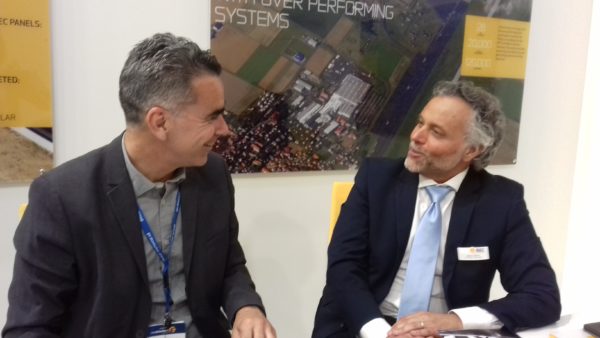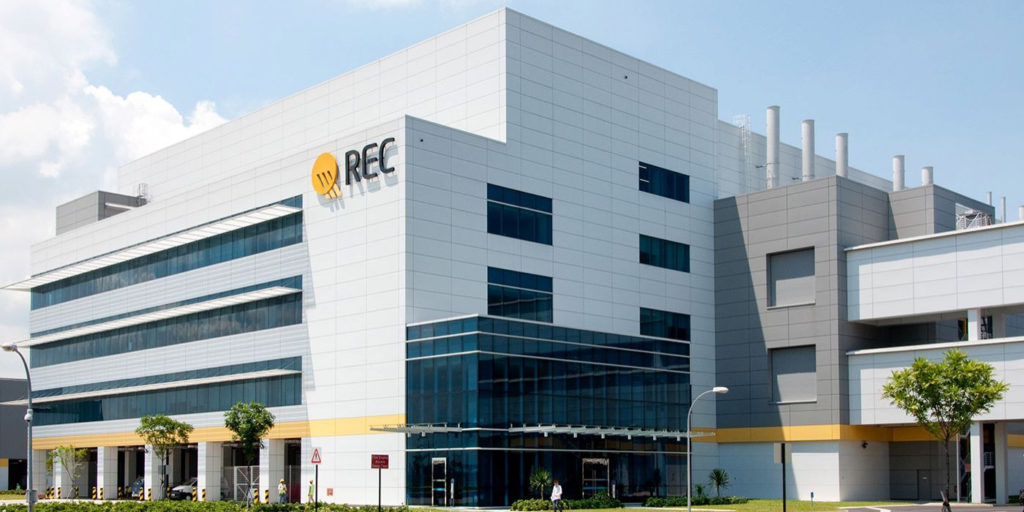“With this new heterojunction module we are entering a new phase,” said Ivano Zanni, VP for European, Middle Eastern and African sales at Norwegian solar module manufacturer REC, at the Intersolar trade show. “So far, we had been mostly producing polycrystalline modules, this is our new step in the industry on a big scale, following the launch of the n-type mono panel N-Peak last summer, and the TwinPeak 2 Mono last December.”
Zanni told pv magazine production of the Alpha Series of high-performance panels will start in October, with the first shipments due in the same quarter. “We have already found 10 new customers for the new modules which we officially presented here at Intersolar,” he said. “They are coming from Australia, Germany, France and Italy, among others.” The module will be available from the end of this year in all markets. “We will go to all of these markets where there is a strong rooftop business, including of course European markets, Australia, Japan and the United States,” Zanni added.

Image: pv magazine
With the new module, REC aims to become a leading provider in the residential and commercial rooftop segments. “The module offers the best power density you can get, an important fact for rooftops especially where there are limited square meters,” said the REC representative. When asked about the difference in price with its traditional products, Zanni said: “A premium product has a premium price but it will be in the level of other top brands in the high efficiency segment.”
Capacity expansion
REC, which is still producing polysilicon at Kristiansand in Norway, is planning to gradually raise the production capacity of the new Meyer Burger line that is manufacturing Alpha modules at its factory in Singapore to 600 MW by the end of next year. “This would mean our total capacity including other products will reach around 2 GW by then,” Zanni said. The factory’s current capacity is around 1.5 GW. “More or less at capacity now, it is half mono and half poly as we use our capacity to keep having a broad range of products while increasing our focus on the residential business.”
The new monocrystalline silicon/amorphous silicon heterojunction module has a power output of up to 380 Wp, which Zanni defined as a starting point, as the company plans to raise the figure. “The Alpha series is the next step beyond our monocrystalline product and the n-type mono module we launched last year,” he said, adding the basis of the panel is an REC n-type cell. “In addition, we have this smart wire technology that enables us to avoid the use of busbars. It is a small, 16-finger very thin line which makes our product unique, in combination with our historic technology TwinPeak.”
According to the product’s official spec (pdf), the 380 W module has an efficiency of 21.7% and the module’s black version has an efficiency of 21.4% and an output of up to 375 W.
Zanni said the modules come in two designs, one with white backsheets and one with full black, with a black backsheet and frame. The latter is said to be ideal for the U.S. market and the Nordic region. “But it is also suitable for southern regions, where temperatures are higher,” Zanni added. The module has a 20-year product guarantee and a 25-year yield guarantee for up to 86% of its output after 25 years.
Despite the company’s efforts to move to the rooftop sector, a third of REC’s business is still related to large scale solar parks. “We still have around one-third residential, one-third commercial and one-third utility,” said Zanni, refusing to rule out the possibility that the company could one day enter the bifacial market.
This content is protected by copyright and may not be reused. If you want to cooperate with us and would like to reuse some of our content, please contact: editors@pv-magazine.com.




1 comment
By submitting this form you agree to pv magazine using your data for the purposes of publishing your comment.
Your personal data will only be disclosed or otherwise transmitted to third parties for the purposes of spam filtering or if this is necessary for technical maintenance of the website. Any other transfer to third parties will not take place unless this is justified on the basis of applicable data protection regulations or if pv magazine is legally obliged to do so.
You may revoke this consent at any time with effect for the future, in which case your personal data will be deleted immediately. Otherwise, your data will be deleted if pv magazine has processed your request or the purpose of data storage is fulfilled.
Further information on data privacy can be found in our Data Protection Policy.